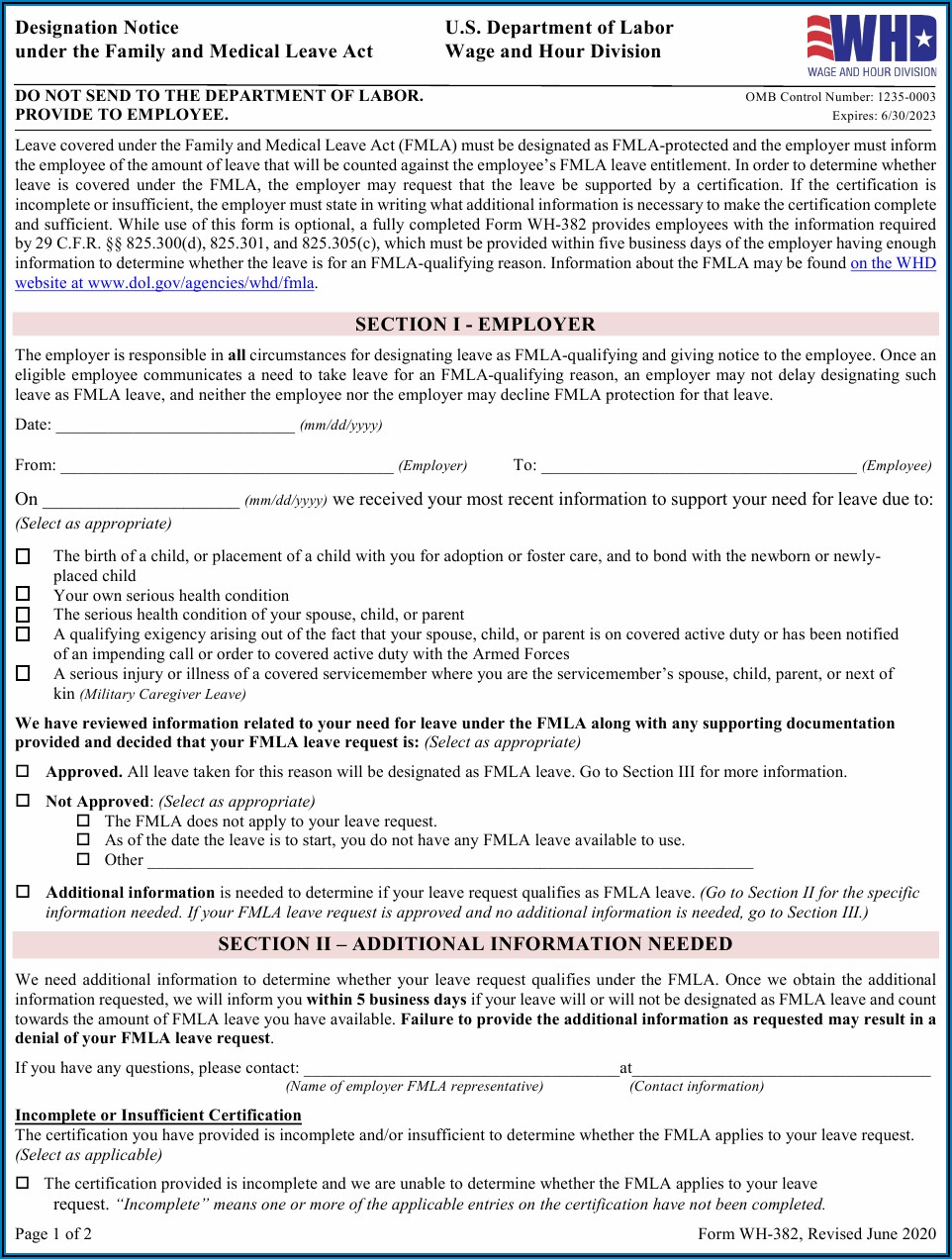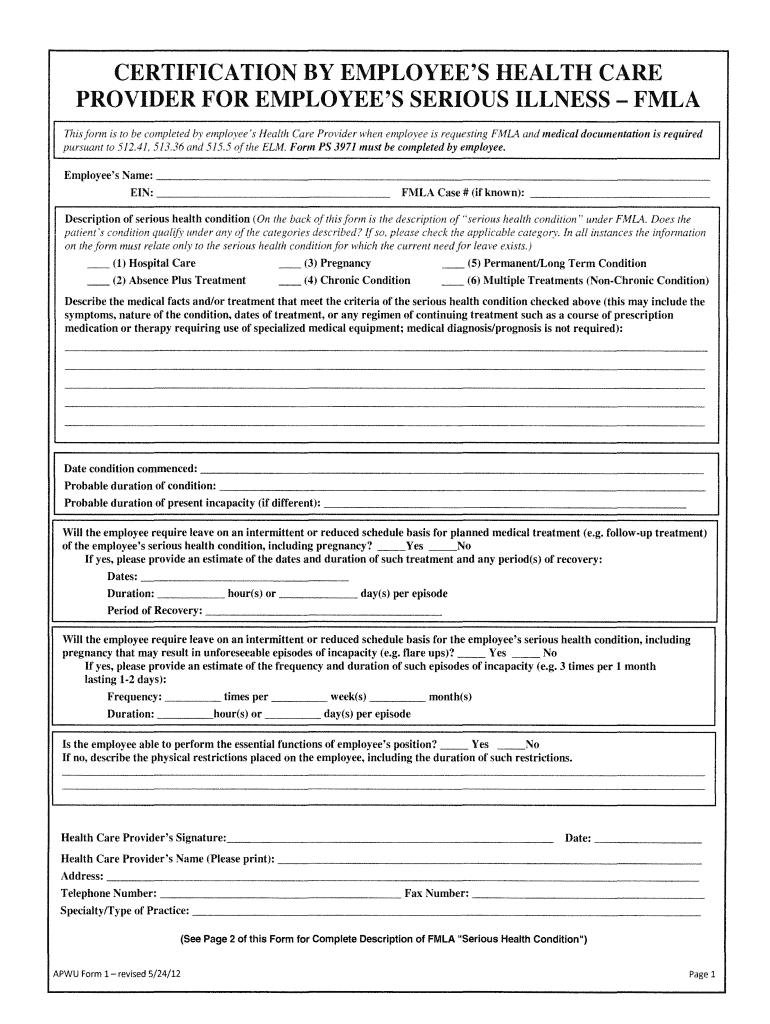FMLA Paperwork: Simple Hacks for the Uninformed

Many employees encounter the Family and Medical Leave Act (FMLA) for the first time when faced with personal health issues, the need to care for a family member, or other qualifying events. Navigating the paperwork associated with FMLA can be daunting, particularly if you're not familiar with HR processes or legal requirements. Here are some simple hacks to make the process smoother and ensure you're fully informed:
Understanding the Basics of FMLA

Before diving into the paperwork, let's outline what FMLA entails:
- Eligibility: You must have worked for your employer for at least 12 months, accumulating at least 1,250 hours over the last year.
- Reasons for Leave: Includes serious health conditions, caring for a family member with a serious health condition, childbirth or adoption, or certain military family events.
- Duration: Eligible employees are entitled to up to 12 weeks of unpaid, job-protected leave in a 12-month period.
Step-by-Step Guide to FMLA Paperwork

Step 1: Determine Eligibility

First, ascertain if you meet the FMLA eligibility criteria:
- Contact your HR department to verify your employment duration and hours worked.
- Keep track of your work hours, especially if your employment is part-time or irregular.
Step 2: Obtain the Necessary Forms

You’ll need several forms:
- WH-380-E: Used by employees to request FMLA leave.
- WH-380-F: Certification of Health Care Provider for Employee’s Serious Health Condition.
- WH-381: Designation Notice.
- WH-384: Certification of Qualifying Exigency for Military Family Leave.
- WH-385: Certification for Serious Injury or Illness of a Current Servicemember.
- WH-385-V: Certification for Serious Injury or Illness of a Veteran.
Most companies provide these forms or direct you to the Department of Labor’s website.
Step 3: Fill Out the Employee Request Form (WH-380-E)

Here’s what you need to do:
- List the reason for leave clearly.
- Indicate the start and end dates of your leave if known.
- Check if you’re interested in substitution of paid leave.
📋 Note: Ensure all fields are completed accurately to avoid delays in processing your leave request.
Step 4: Secure the Health Care Provider’s Certification

Obtaining certification can be complex:
- Take the appropriate medical certification form to your doctor or the family member’s doctor.
- Explain your need for FMLA leave; the provider needs to know why their certification is required.
- Make sure the form is filled out and returned to HR promptly.
Step 5: Communicate with HR

Good communication is key:
- Keep HR updated on your health status or any changes to your leave request.
- Request clarification on any forms or notices you don’t understand.
- Understand your rights regarding FMLA.
Common Pitfalls to Avoid

Here are some common issues to steer clear of:
- Late Submission: Submit your forms as soon as possible. Late submissions can complicate matters.
- Incomplete Documentation: Ensure all parts of the forms are filled out correctly.
- Confusion Over Substitution: Understand whether you want to use paid leave in conjunction with FMLA leave.
⚠️ Note: Understand the impact of your leave on your benefits and insurance, as FMLA leave might affect your accruals.
Tools and Resources for Streamlined FMLA Management

HR Software

Some companies use HR software that:
- Automates form filling.
- Tracks leave time.
- Provides notifications and reminders for employees.
Legal Resources

When in doubt:
- Use the Department of Labor’s website for accurate information.
- Consult with legal experts in employment law if you feel your rights are being infringed upon.
Successfully navigating FMLA paperwork ensures you can take the leave you're entitled to without undue stress. Understanding your rights, keeping communication open with your employer, and managing the process with care can make what initially appears to be an overwhelming task much simpler. This knowledge not only benefits you during times of need but also helps in planning personal and family care effectively. Remember, while the process can be intricate, it's manageable with the right approach and resources at your disposal.
Can I take FMLA leave multiple times?

+
Yes, you can take FMLA leave multiple times as long as it doesn’t exceed the 12-week entitlement within a 12-month period.
What happens if I’m denied FMLA leave?

+
If you’re denied FMLA leave and believe it’s due to an error or misunderstanding, you can appeal the decision with your HR department or seek legal advice if necessary.
Do I have to return to work after my FMLA leave?

+
While FMLA provides job protection, if you don’t return to work after your leave, you could be seen as having voluntarily resigned, potentially affecting benefits and reinstatement.



